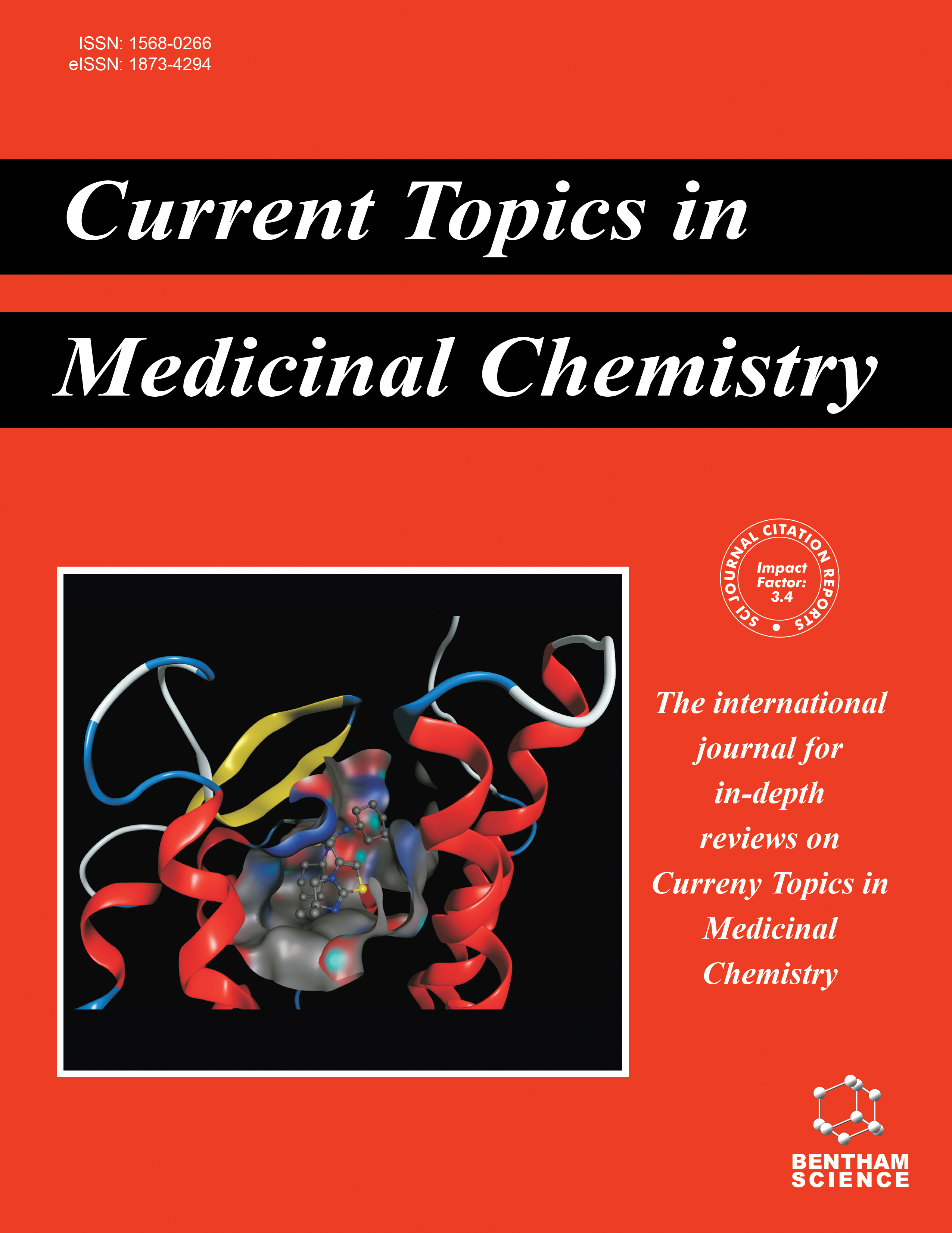- Home
- A-Z Publications
- Current Topics in Medicinal Chemistry
- Previous Issues
- Volume 8, Issue 15, 2008
Current Topics in Medicinal Chemistry - Volume 8, Issue 15, 2008
Volume 8, Issue 15, 2008
-
-
Editorial [Hot Topic: Nucleic Acid Metabolism and Human Disease (Guest Editor: Luis G. Brieba)]
More LessDNA is our “blueprint” and it can be envisioned as a pristine code that contains the instructions for life. However, DNA has inherent problems to be maintained as a pristine code. DNA has to be replicated with almost perfect accuracy, and as an organic molecule it can react with chemical substances of the cellular milieu. The DNA polymerases that replicate our DNA are far from perfect. Our nuclear replicative DNA polyme Read More
-
-
-
Template Dependent Human DNA Polymerases
More LessThe genetic material in humans contains approximately 6 billion base pairs in the nuclear genome and 16,569 base pairs in the mitochondrial genome [1-3]. In some cases the difference between a healthy and a sick individual consists in only one nucleotide. Thus, it is evident that the pristine replication of the genome is a key event in the avoidance of mutations and therefore diseases. Although it is generally believed t Read More
-
-
-
Molecular Architecture of Tumor Suppressor p53
More Lessp53 is a transcription factor central to cellular DNA metabolism that controls cellular responses to DNA damage. p53 activity, finely regulated, integrates the information from several pathways to preserve the cell's genetic information. Great attention has been given to the structural determination of p53 domains and its cancerous mutants because 50% of cancer cases present mutations in p53 that hinder its activity Read More
-
-
-
Protein Synthesis and Assembly in Mitochondrial Disorders
More LessHuman mitochondrial DNA (mtDNA) codes for 13 polypeptides which constitute the central core of the oxidative phosphorylation (OXPHOS) complexes. The machinery for mitochondrial protein synthesis has a dual origin: a full set of tRNAs, as well as the 12S and 16S rRNAs are encoded in the mitochondrial genome, while most factors necessary for translation are encoded by nuclear genes. The mitochondrial translation Read More
-
-
-
Mitochondrial DNA Mutations in Cancer: A Review
More LessAuthors: Cristina Santos, Monica Martinez, Manuela Lima, You-Jin Hao, Nelson Simoes and Rafeal MontielAs mitochondria participate in fundamental process of the cellular metabolism, recent research has addressed the role of mitochondria, and of mitochondrial DNA (mtDNA), in apoptosis, aging, and complex diseases. The association between mtDNA and cancer has been discussed since the beginning of the last century, and more recently, it has gained attention due to the observation of many somatic mutations in several ty Read More
-
-
-
Epigenetic Regulation and Therapeutic Approaches in Cancer
More LessThe interdependency between genetic and epigenetic regulatory processes renders cancer therapeutics and translational clinic possible, even though they remain difficult tasks considering all the evidence supporting a central role of progenitor-stem cells as a causative source of cellular transformation. In contrast to genetic alterations, epigenetic processes are potentially reversible allowing a better action of complement Read More
-
-
-
Nucleic Acids as Therapeutic Agents
More LessTherapeutic nucleic acids (TNAs) and its precursors are applied to treat several pathologies and infections. TNA-based therapy has different rationales and mechanisms and can be classified into three main groups: 1) Therapeutic nucleotides and nucleosides; 2) Therapeutic oligonucleotides; and 3) Therapeutic polynucleotides. This review will focus in those TNAs that have reached clinical trials with anticance Read More
-
-
-
Stabilisation of G-Quadruplex DNA by Small Molecules
More LessAuthors: Anna Arola and Ramon VilarGuanine-rich sequences of DNA can form quadruply-stranded structures. It has been shown that folding singlestranded telomeric DNA into a quadruplex structure inhibits telomerase (an enzyme overexpressed in 85-90% of cancer cells). On the other hand, it has been hypothesised that the formation of quadruplex DNA structures in the promoter region of some oncogenes plays an important role in regulating the transcr Read More
-
Volumes & issues
-
Volume 25 (2025)
-
Volume 24 (2024)
-
Volume 23 (2023)
-
Volume 22 (2022)
-
Volume 21 (2021)
-
Volume 20 (2020)
-
Volume 19 (2019)
-
Volume 18 (2018)
-
Volume 17 (2017)
-
Volume 16 (2016)
-
Volume 15 (2015)
-
Volume 14 (2014)
-
Volume 13 (2013)
-
Volume 12 (2012)
-
Volume 11 (2011)
-
Volume 10 (2010)
-
Volume 9 (2009)
-
Volume 8 (2008)
-
Volume 7 (2007)
-
Volume 6 (2006)
-
Volume 5 (2005)
-
Volume 4 (2004)
-
Volume 3 (2003)
-
Volume 2 (2002)
-
Volume 1 (2001)
Most Read This Month
Article
content/journals/ctmc
Journal
10
5
false
en


